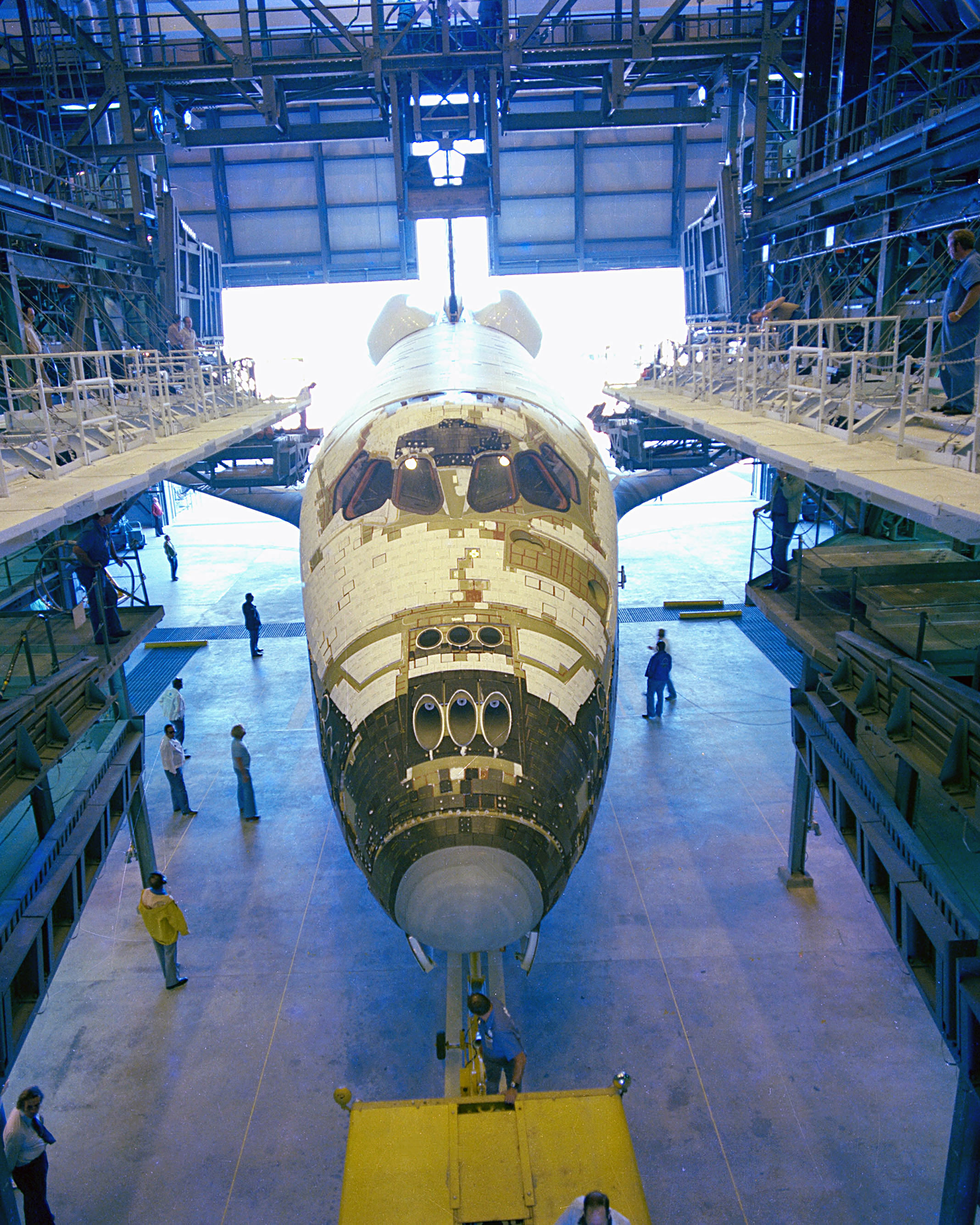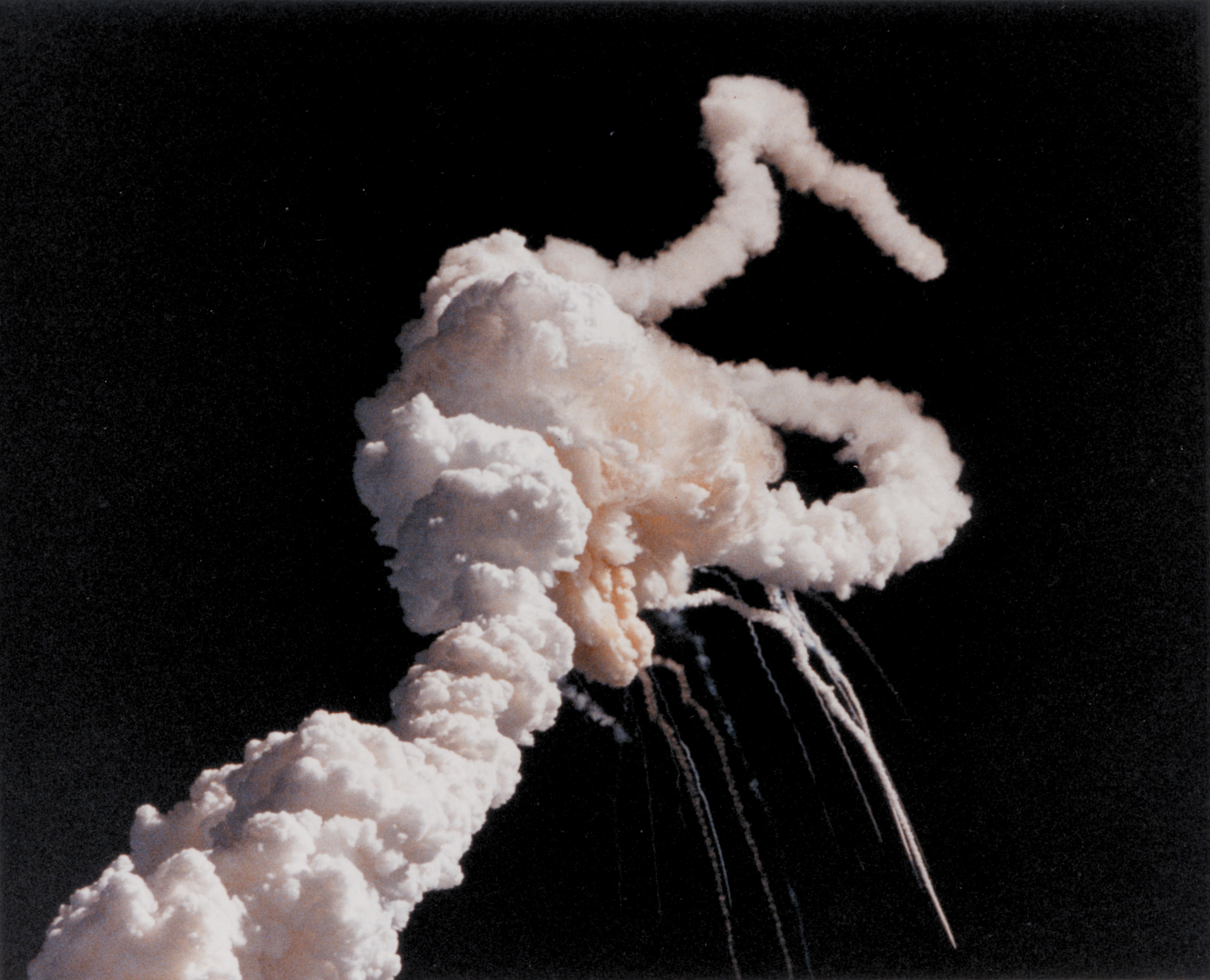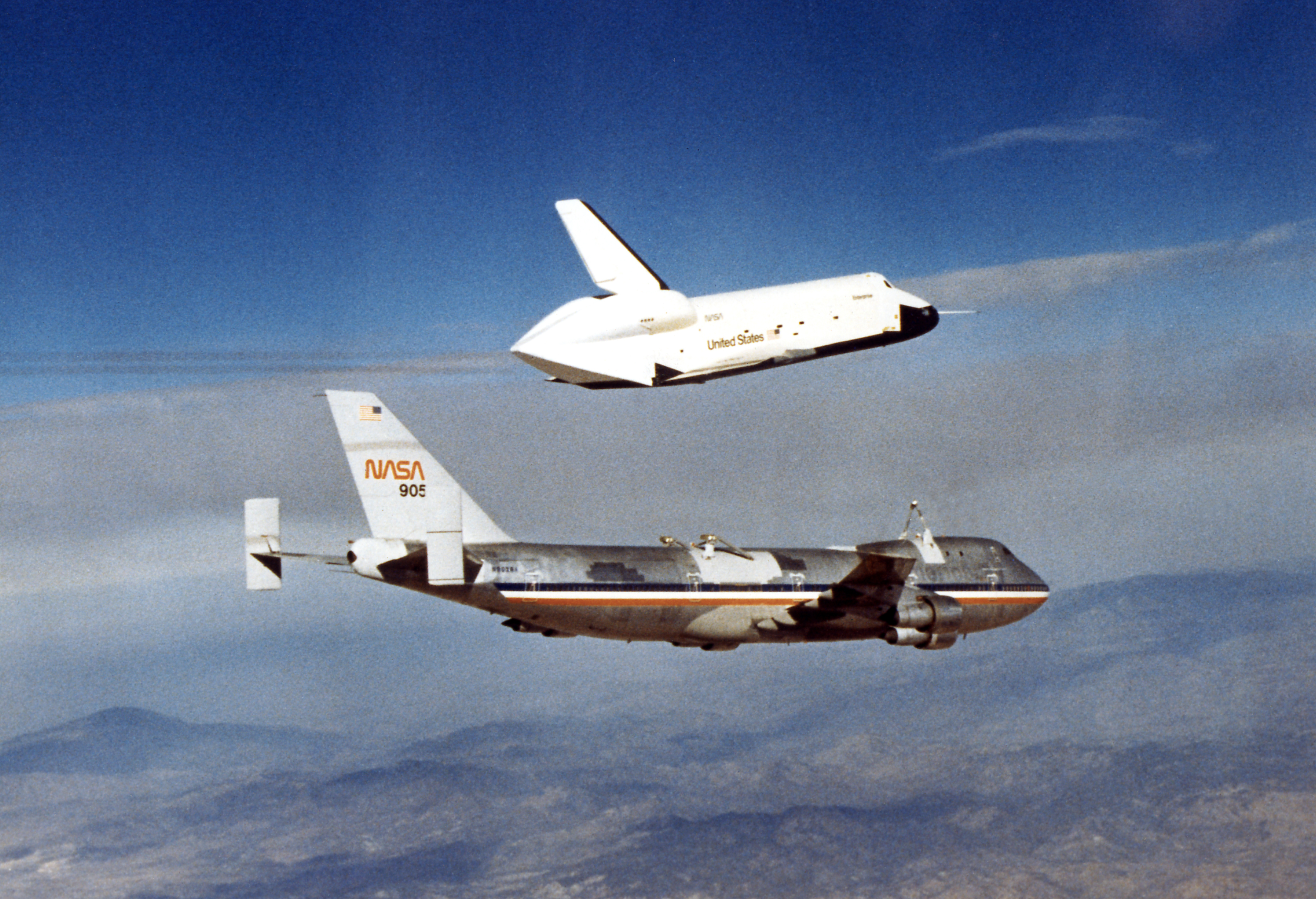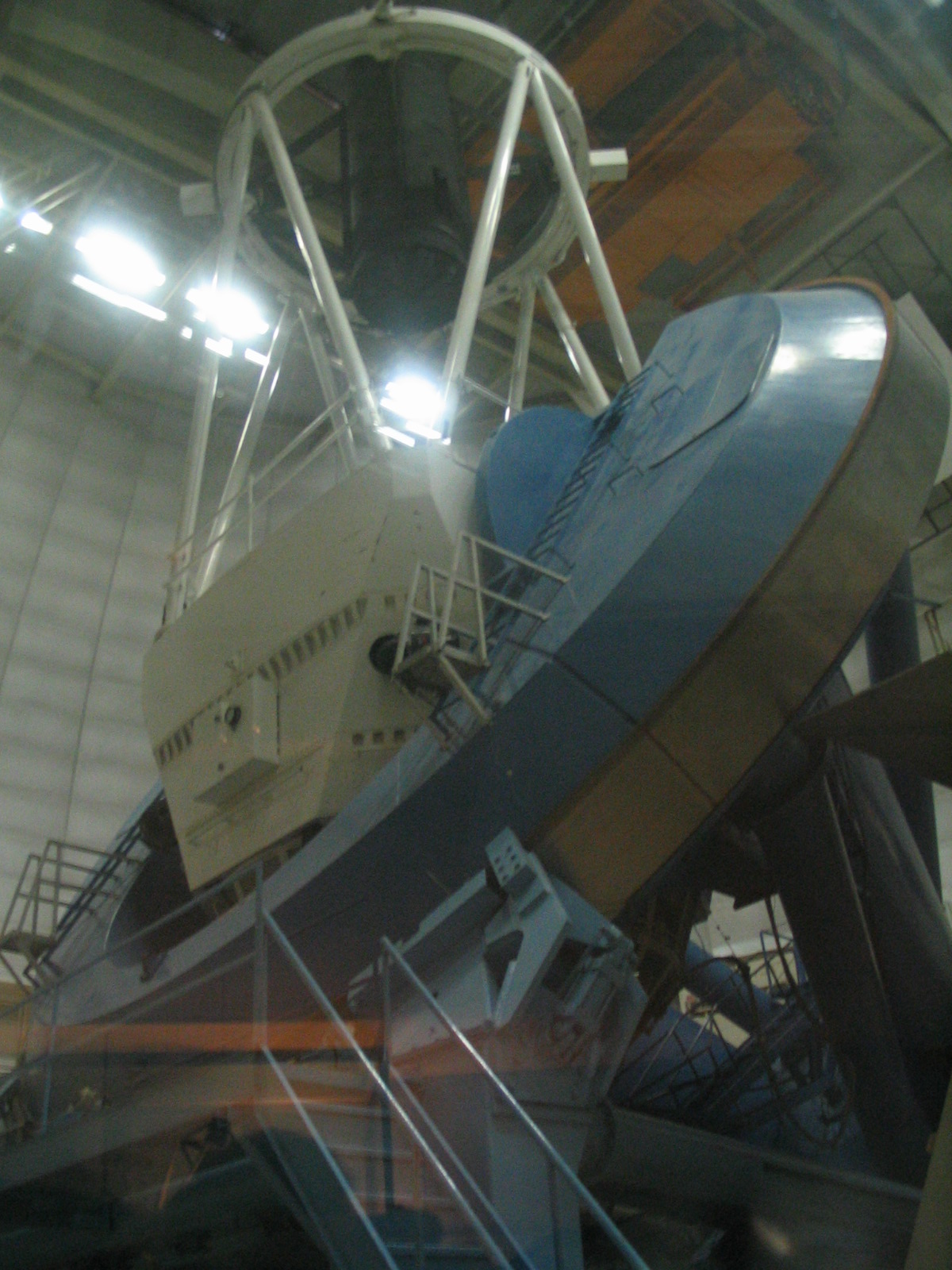|
STS-61-E
STS-61-E was a NASA Space Shuttle mission planned to launch on 6 March 1986 using ''Columbia''. It was canceled after the ''Challenger'' disaster. Crew Backup crew Mission objectives ''Columbia'' was to carry the ASTRO-1 observatory, which would be used to make astronomical observations including observations of Halley's Comet. ASTRO-1 consisted of three ultraviolet telescopes mounted on two Spacelab pallets, controlled by the Instrument Pointing System (IPS) which was first tested on STS-51-F. After the ''Challenger'' disaster, the flight was remanifested as STS-35 and several crew members were replaced. Both Richards and Leestma were reassigned to STS-28 while McBride left NASA in 1989. Vance D. Brand replaced McBride as the commander while Guy S. Gardner and John M. Lounge replaced Richards and Leestma, respectively. See also * Canceled Space Shuttle missions * STS-35 STS-35 was the tenth flight of Space Shuttle ''Columbia'', the 38th shuttle mission. ... [...More Info...] [...Related Items...] OR: [Wikipedia] [Google] [Baidu] |
Jon McBride
Jon Andrew McBride (August 14, 1943 – August 7, 2024) was an American United States Navy, naval officer, test pilot, astronaut and administrator for NASA. Throughout his career with the United States Navy, McBride served as an aviator, a fighter pilot, a test pilot, and an aeronautical engineer. He had achieved the rank of captain when he retired in 1989. McBride was an astronaut with NASA, a role in which he piloted STS-41-G, and would have been commander of STS-61-E had the mission not been Canceled Space Shuttle missions, canceled as the next scheduled launch in the wake of the Space Shuttle Challenger disaster, ''Challenger'' disaster. Early life, education and personal life Jon McBride was born on August 14, 1943, in Charleston, West Virginia. When he was still a young child, his family moved to Beckley, West Virginia, which he considered to be his hometown. In 1960, he graduated from Beckley's Woodrow Wilson High School (Beckley, West Virginia), Woodrow Wilson High Sc ... [...More Info...] [...Related Items...] OR: [Wikipedia] [Google] [Baidu] |
Halley's Comet
Halley's Comet is the only known List of periodic comets, short-period comet that is consistently visible to the naked eye from Earth, appearing every 72–80 years, though with the majority of recorded apparitions (25 of 30) occurring after 75–77 years. It last appeared in the inner parts of the Solar System in 1986 and will next appear in mid-2061. Officially designated 1P/Halley, it is also commonly called Comet Halley, or sometimes simply Halley. Halley's periodic returns to the inner Solar System have been observed and recorded by astronomers around the world since at least 240 BC, but it was not until 1705 that the English astronomer Edmond Halley understood that these appearances were re-appearances of the same comet. As a result of this discovery, the comet is named after Halley. During its 1986 visit to the inner Solar System, Halley's Comet became the first comet to be observed in detail by a spacecraft, ''Giotto (spacecraft), Giotto'', providing the first obser ... [...More Info...] [...Related Items...] OR: [Wikipedia] [Google] [Baidu] |
Space Shuttle Columbia
Space Shuttle ''Columbia'' (OV-102) was a Space Shuttle orbiter manufactured by Rockwell International and operated by NASA. Named after the Columbia Rediviva, first American ship to circumnavigate the globe, and the Columbia (personification), female personification of the United States, ''Columbia'' was the first of five Space Shuttle orbiters to fly in space, debuting the Space Shuttle, Space Shuttle launch vehicle on STS-1, its maiden flight on April 12, 1981 and becoming the first spacecraft to be re-used after its first flight when it launched on STS-2 on November 12, 1981. As only the second full-scale orbiter to be manufactured after the Approach and Landing Tests, Approach and Landing Test vehicle ''Space Shuttle Enterprise, Enterprise'', ''Columbia'' retained unique external and internal features compared to later orbiters, such as test instrumentation and distinctive black Chine (aeronautics), chines. In addition to a heavier aft fuselage and the retention of an inter ... [...More Info...] [...Related Items...] OR: [Wikipedia] [Google] [Baidu] |
STS-35
STS-35 was the tenth flight of Space Shuttle ''Columbia'', the 38th shuttle mission. It was devoted to astronomical observations with ASTRO-1, a Spacelab observatory consisting of four telescopes. The mission launched from Kennedy Space Center in Florida on December 2, 1990. Crew Prior to the ''Challenger'' disaster, this mission was slated to launch in March 1986 as STS-61-E. Jon A. McBride was originally assigned to command this mission, which would have been his second spaceflight. He chose to retire from NASA in May 1989 and was replaced as mission commander by Vance D. Brand. In addition, Richard N. Richards (as pilot) and David C. Leestma (as mission specialist), were replaced by Guy S. Gardner and John M. Lounge respectively. Fifty-nine-year-old Brand was the oldest astronaut to fly into space until F. Story Musgrave, 61 on STS-80 in 1996, and U.S. Senator John H. Glenn Jr., 77 when he flew on STS-95 in 1998. Crew seat assignments Preparations and l ... [...More Info...] [...Related Items...] OR: [Wikipedia] [Google] [Baidu] |
STS-61-F
STS-61-F was a NASA Space Shuttle mission planned to launch on 15 May 1986 using ''Challenger''. It was canceled after ''Challenger'' was destroyed earlier that year. Crew Mission objectives The main objective of STS-61-F was to deploy the ''Ulysses'' solar probe, which would travel to Jupiter and use it as a gravitational slingshot in order to be placed into polar orbit around the Sun. This mission would have marked the first use of the Centaur-G liquid-fueled payload booster, which would also be used on the subsequent mission to send the ''Galileo'' probe in orbit around Jupiter. Due to the use of the Centaur-G and its volatile propellants, this mission was considered to be one of the most dangerous Space Shuttle flights attempted, with the Chief of the Astronaut Office John W. Young referring to the two Centaur flights as the "Death Star" flights. The flight was risky enough that Commander Hauck gave his crewmates an option to leave the crew if they considered ... [...More Info...] [...Related Items...] OR: [Wikipedia] [Google] [Baidu] |
STS-51-L
STS-51-L was the disastrous 25th mission of NASA's Space Shuttle program and the final flight of Space Shuttle ''Challenger''. It was planned as the first Teacher in Space Project flight in addition to observing Halley's Comet for six days and performing a routine satellite deployment. The mission never achieved orbit; a structural failure during its ascent phase 73 seconds after launch from Kennedy Space Center Launch Complex 39B on January 28, 1986, destroyed the orbiter and killed all seven crew members—Commander Francis R. "Dick" Scobee, Pilot Michael J. Smith, Mission Specialists Ellison S. Onizuka, Judith A. Resnik and Ronald E. McNair, and Payload Specialists Gregory B. Jarvis and S. Christa McAuliffe. Immediately after the failure, President Ronald Reagan convened the Rogers Commission to determine the cause of the explosion. The failure of an O-ring seal on the starboard Solid Rocket Booster (SRB) was determined to have caused the shuttle to break up ... [...More Info...] [...Related Items...] OR: [Wikipedia] [Google] [Baidu] |
STS-26
STS-26 was the 26th NASA Space Shuttle mission and the seventh flight of the orbiter ''Discovery''. The mission launched from Kennedy Space Center, Florida, on September 29, 1988, and landed four days later on October 3, 1988. STS-26 was declared the "Return to Flight" mission, being the first mission after the Space Shuttle ''Challenger'' disaster of January 28, 1986. It was the first mission since STS-9 to use the original Space Transportation System (STS) numbering system, the first to have all its crew members wear pressure suits for launch and landing since STS-4, and the first mission with bailout capacity since STS-4. STS-26 was also the first U.S. space mission with an all-veteran crew since Apollo 11, with all of its crew members having flown at least one prior mission. The mission is technically designated STS-26R, as the original STS-26 designation previously belonged to STS-51-F (also known as Spacelab-2). Likewise all flights with the STS-26 through STS-33 desig ... [...More Info...] [...Related Items...] OR: [Wikipedia] [Google] [Baidu] |
Space Shuttle
The Space Shuttle is a retired, partially reusable launch system, reusable low Earth orbital spacecraft system operated from 1981 to 2011 by the U.S. National Aeronautics and Space Administration (NASA) as part of the Space Shuttle program. Its official program name was the Space Transportation System (STS), taken from the 1969 plan led by U.S. vice president Spiro Agnew for a system of reusable spacecraft where it was the only item funded for development. The first (STS-1) of four orbital test flights occurred in 1981, leading to operational flights (STS-5) beginning in 1982. Five complete Space Shuttle orbiter vehicles were built and flown on a total of 135 missions from 1981 to 2011. They launched from the Kennedy Space Center (KSC) in Florida. Operational missions launched numerous satellites, interplanetary probes, and the Hubble Space Telescope (HST), conducted science experiments in orbit, participated in the Shuttle–Mir program, Shuttle-''Mir'' program with Russia, ... [...More Info...] [...Related Items...] OR: [Wikipedia] [Google] [Baidu] |
Space Shuttle Challenger Disaster
On January 28, 1986, the Space Shuttle ''Challenger'' broke apart 73 seconds into its flight, killing all seven crew members aboard. The spacecraft disintegrated above the Atlantic Ocean, off the coast of Cape Canaveral, Florida, at 16:39:13UTC (11:39:13a.m. EST, local time at the launch site). It was the first fatal accident involving an American spacecraft while in flight. The mission, designated STS-51-L, was the 10th flight for the orbiter and the 25th flight of the Space Shuttle fleet. The crew was scheduled to deploy a commercial communications satellite and study Halley's Comet while they were in orbit, in addition to taking schoolteacher Christa McAuliffe into space under the Teacher in Space Project. The latter task resulted in a higher-than-usual media interest in and coverage of the mission; the launch and subsequent disaster were seen live in many schools across the United States. The cause of the disaster was the failure of the primary and secondary O-ring ... [...More Info...] [...Related Items...] OR: [Wikipedia] [Google] [Baidu] |
Space Transportation System
The Space Transportation System (STS), also known internally to NASA as the Integrated Program Plan (IPP), was a proposed system of reusable crewed spacecraft, space vehicles envisioned in 1969 to support extended operations beyond the Apollo program (NASA appropriated the name for its Space Shuttle Program, the only component of the proposal to survive Congressional funding approval). The purpose of the system was two-fold: to reduce the cost of spaceflight by replacing the existing method of launching space capsule, capsules on expendable rockets with reusable spacecraft; and to support ambitious follow-on programs including permanent orbiting space stations around Earth and the Moon, and a human landing mission to Mars. In February 1969, President Richard Nixon appointed a Space Task Group headed by Vice President Spiro Agnew to recommend human space projects beyond Apollo. The group responded in September with the outline of the STS, and three different program levels of e ... [...More Info...] [...Related Items...] OR: [Wikipedia] [Google] [Baidu] |
Observational Astronomy
Observational astronomy is a division of astronomy that is concerned with recording data about the observable universe, in contrast with theoretical astronomy, which is mainly concerned with calculating the measurable implications of physical models. It is the practice and study of observing celestial objects with the use of telescopes and other astronomical instruments. As a science, the study of astronomy is somewhat hindered in that direct experiments with the properties of the distant universe are not possible. However, this is partly compensated by the fact that astronomers have a vast number of visible examples of stellar phenomena that can be examined. This allows for observational data to be plotted on graphs, and general trends recorded. Nearby examples of specific phenomena, such as variable stars, can then be used to infer the behavior of more distant representatives. Those distant yardsticks can then be employed to measure other phenomena in that neighborhood, inc ... [...More Info...] [...Related Items...] OR: [Wikipedia] [Google] [Baidu] |
Ultraviolet Astronomy
Ultraviolet astronomy is the observation of electromagnetic radiation at ultraviolet wavelengths between approximately 10 and 320 nanometres; shorter wavelengths—higher energy photons—are studied by X-ray astronomy and gamma-ray astronomy. Ultraviolet light is not visible to the human eye. Most of the light at these wavelengths is absorbed by the Earth's atmosphere, so observations at these wavelengths must be performed from the upper atmosphere or from space. Overview Ultraviolet line spectrum measurements (spectroscopy) are used to discern the chemical composition, densities, and temperatures of the interstellar medium, and the temperature and composition of hot young stars. UV observations can also provide essential information about the evolution of galaxies. They can be used to discern the presence of a hot white dwarf or main sequence companion in orbit around a cooler star. The ultraviolet universe looks quite different from the familiar stars and galaxies ... [...More Info...] [...Related Items...] OR: [Wikipedia] [Google] [Baidu] |








